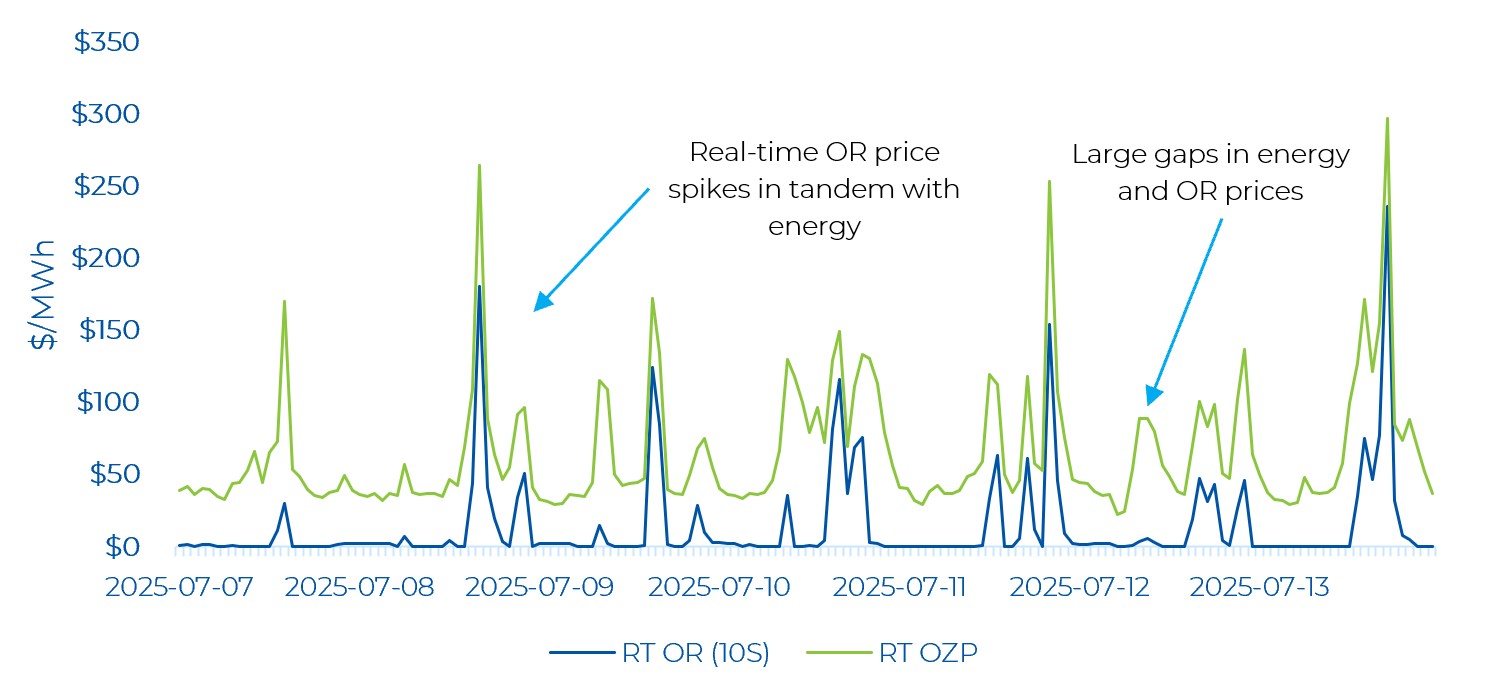IESO have stated that there is a data error which impacts the gas data dispatch reported in the IESO Adequacy Reports. Note, this does not impact Power Advisory’s Weekly MRP Reports.
In Power Advisory’s MRP Market Review: Week 9, there was a statement relating to Blocked Dispatches for Area Control Error that should be clarified as follows: The IESO blocked 7,025 dispatches relating to ACE, which exceeds the entire number of blocked dispatches relating to ACE between March 2022 and April 2025 (6,477 in total).
Zonal Prices and Congestion
The most notable change in the renewed market last week occurred in the West zone. Last week, the Northwest, Northeast, and West zones experienced the most congestion during the day-ahead timeframe. Congestion in the Niagara zone was minor. Most of the congestion in the three zones were concentrated in the beginning of the week. The West zone had the most negative congestion reaching -$86.21/MWh in the day-ahead market (the highest negative congestion this zone has experienced in the day-ahead market since the launch of MRP). This is not a typical outcome but was also observed in Power Advisory’s “MRP Review Week 7”. Interestingly, some of the negative congestion hours in the West zone coincided with negative congestion hours in the Northwest zone.
Note that negative congestion typically means there was a constraint exporting energy from a particular zone, while positive congestion is the opposite. The Northwest and Northeast zones typically post negative congestion in the day-ahead market, as there is often more supply than demand and limited transmission to export it to the major load centres in southern Ontario. In the increasingly high demand days observed, there is starting to be more negative congestion appearing in the Niagara and West zones.
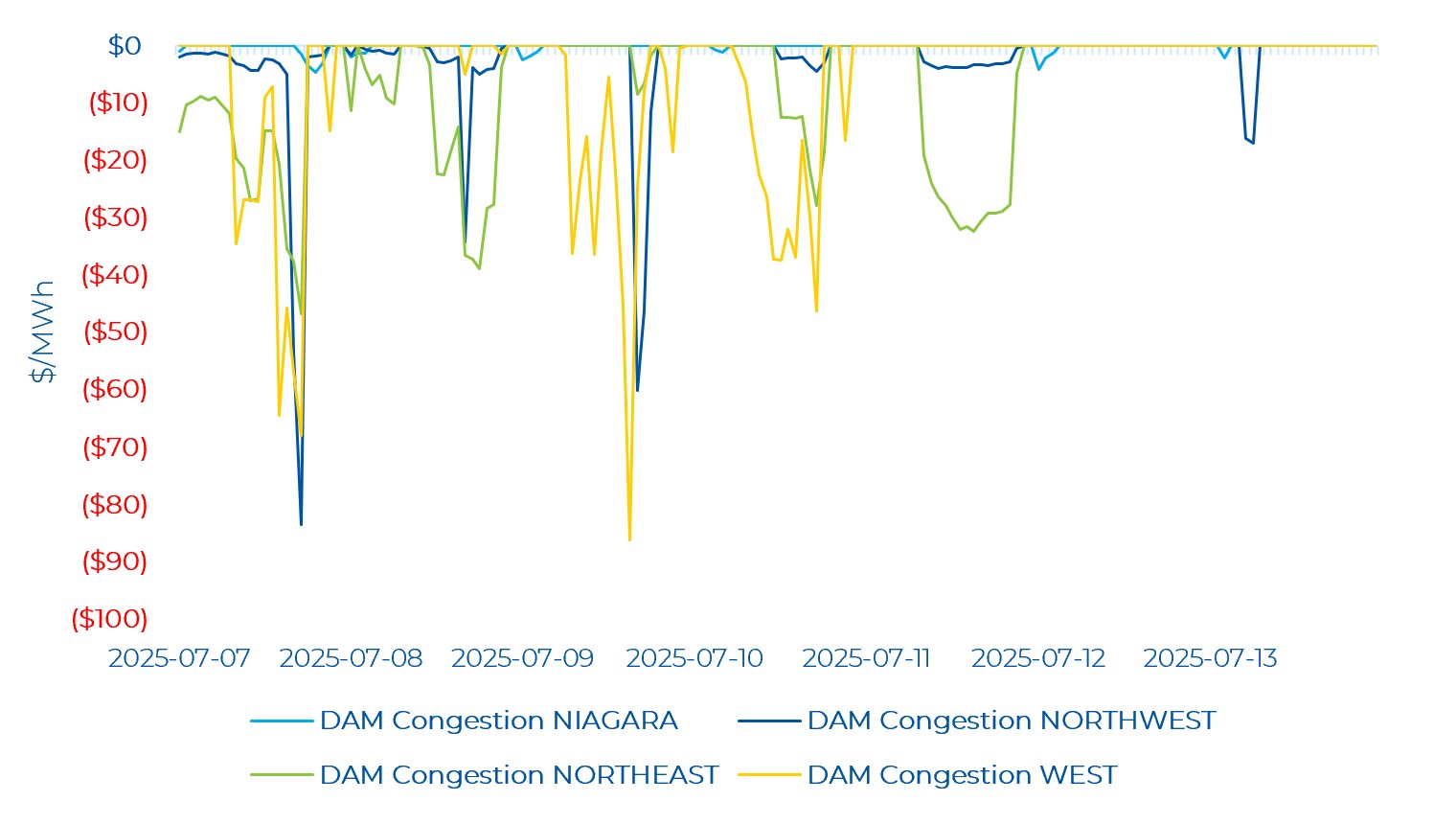
Real-time zonal prices in the Northwest and Northeast remain extremely volatile. The Northwest zone saw both negative and positive congestion. The positive congestion was on July 12, at 3 AM, while very negative congestion was observed throughout the whole week. The Northeast zone only saw negative congestion.
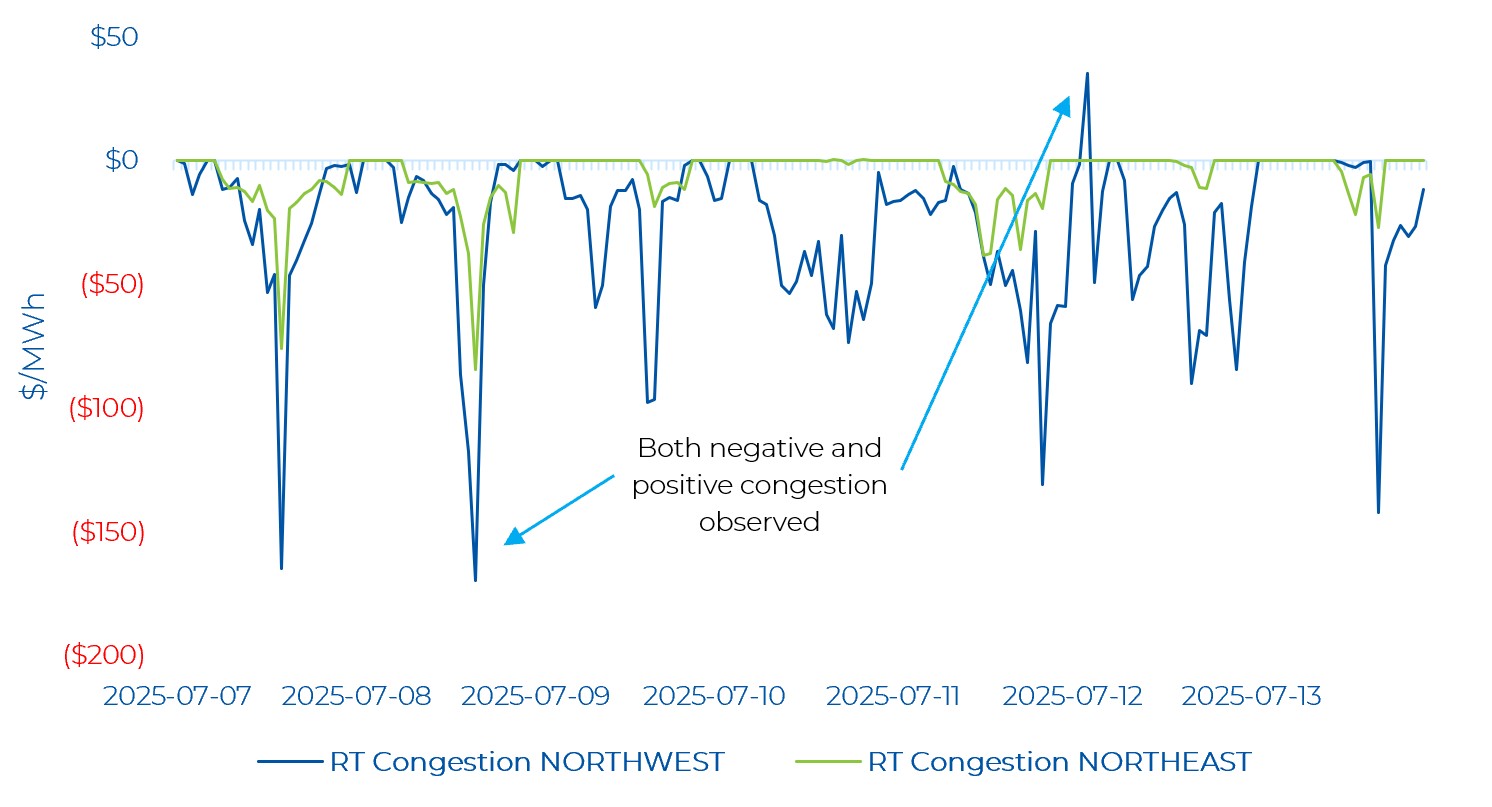
And in real-time, the West zone saw very negative congestion at the beginning of the week – similar to general trends observed in the day-ahead market – with the first three days of the week having relatively lower peak demand than the rest of the week. The most negative congestion was observed on July 7 (3 PM) and July 9 (11 PM). The Niagara zone saw very minor negative congestion.
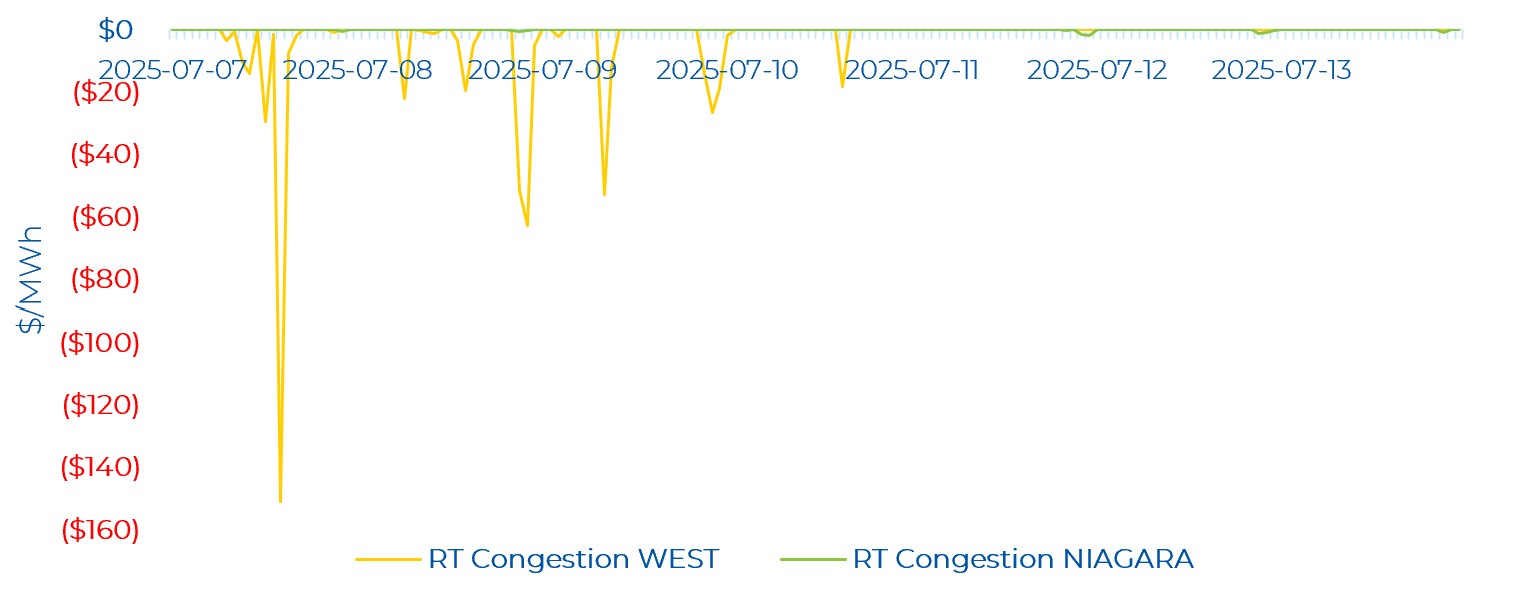
Day-Ahead and Real-Time Prices
It has been two and half months since the launch of MRP on May 1, 2025. Based on interval-level real-time Market Demand and Ontario Zonal Price (OZP) data published by the IESO since the launch of the MRP to July 13, 2025, Power Advisory has highlighted the weekly trend of Market Demand and OZP below. Note that only interval data published by the IESO is shown, missing entries (~1%) are not represented.
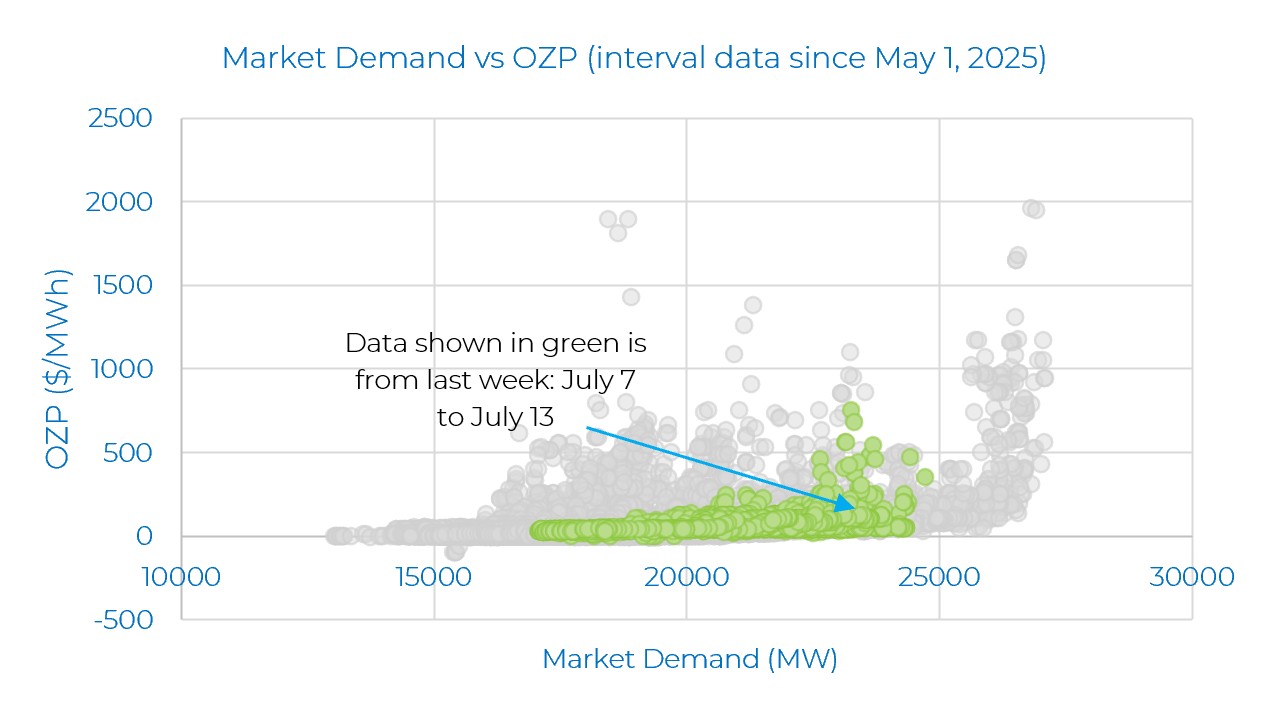
Considering all interval level data since May 1, the highest real-time OZP spike was $1961.23/MWh on one of the hottest demand days where Market Demand was 26,837 MW and Ontario Demand was 24,409 MW (on June 24th during a heat wave). Most prices are well below $200/MWh. However, there are several intervals where OZP spikes go well above $200/MWh even with moderate demand as also highlighted in Power Advisory’s previous MRP weekly reviews.
Looking at last week’s day-ahead and real-time prices, price volatility was much lower, similar to the past week’s MRP review. There were just 3 real-time OZP spikes greater than $200/MWh, with the highest price hitting $297/MWh. The peak demand last week was just 22,918 MW. The number of real-time OZP spike hours above $200/MWh has decreased compared to the previous week’s review as demand was relatively lower. The price spikes occur in hours where demand is changing quickly.
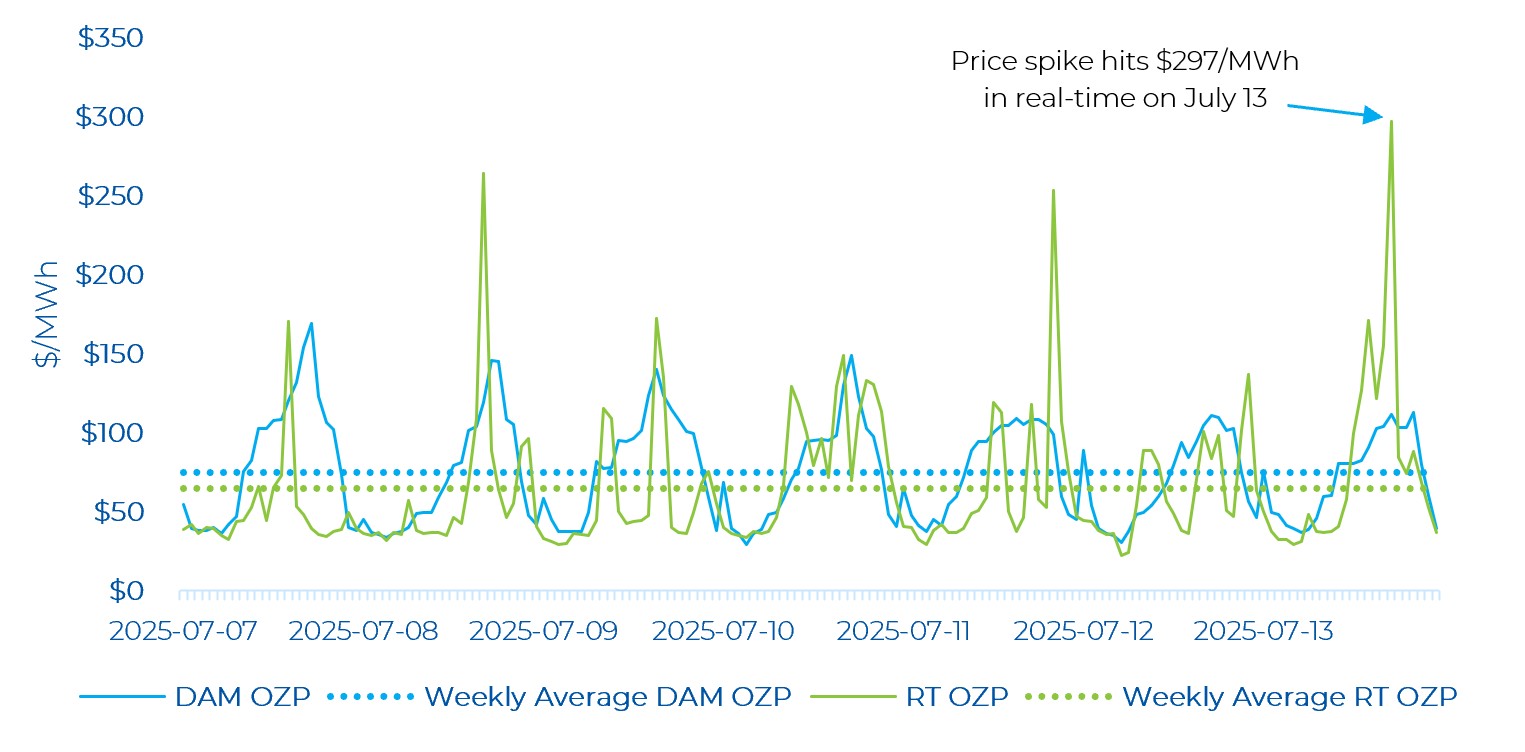
From a forecasted versus real-time demand perspective, at the peak real-time price hour, the IESO under forecasted real-time demand by more than 1,050 MW in the day-ahead time frame. The figure below shows 7 days of forecasted demand in the Adequacy Report for July 13, 2025 at 6 PM (i.e. this looks at the previous 7 days of forecasts for the 6 o’clock hour on July 13th). Throughout the week leading up to this hour, demand was forecasted to be 1,050-3,026 MW lower compared to real-time. Hence, the price spike is also due to the large divergence between the day-ahead to real-time market.
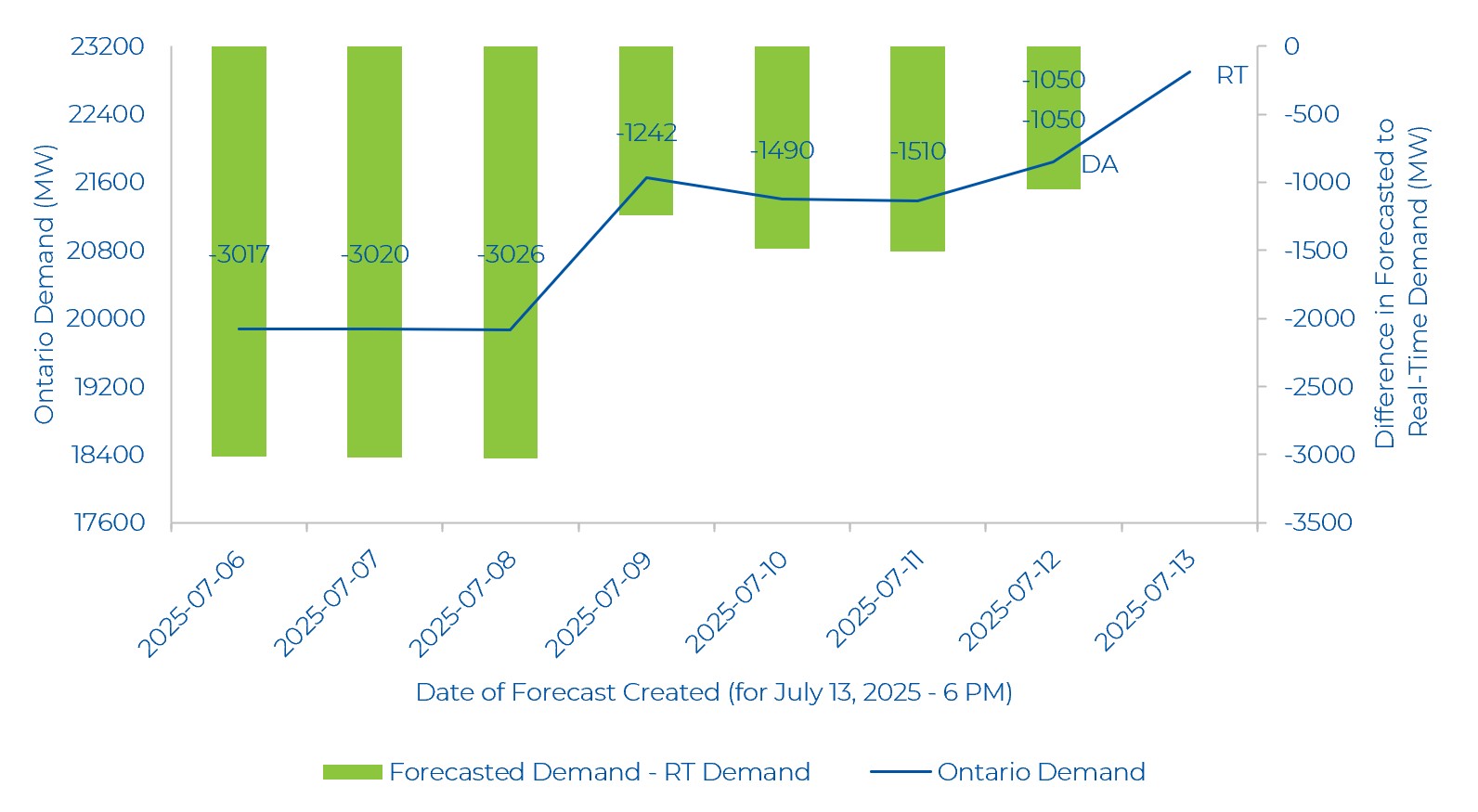
Similar to last week’s review, there were no negative day-ahead or real-time prices. There were several hours where the real-time Ontario price moved from well below the day-ahead price to real-time spikes significantly above it. Also to be noted is that the weekly average day-ahead price was about $10/MWh higher than the average real-time price.
OR Prices
Both real-time and day-ahead Operating Reserve (OR) prices remain elevated compared to historical averages. The average weekly day-ahead 10S price was $12.13/MW, while it was $13.71/MW in real-time. Again, this highlights that the supply stack in the OR market remain much tighter in the renewed market compared to the legacy market (as noted in previous commentaries). Both day-ahead and real-time 10S prices were aligned with previous weeks’ reports. Real-time 10S prices continue to be higher than day-ahead 10S prices. OR prices in day-ahead were less volatile, with the highest price spike being $100.70/MW on the first day of the week (July 7). Similar to the OZP prices, there were fewer real-time OR price spikes compared to the previous week’s review.
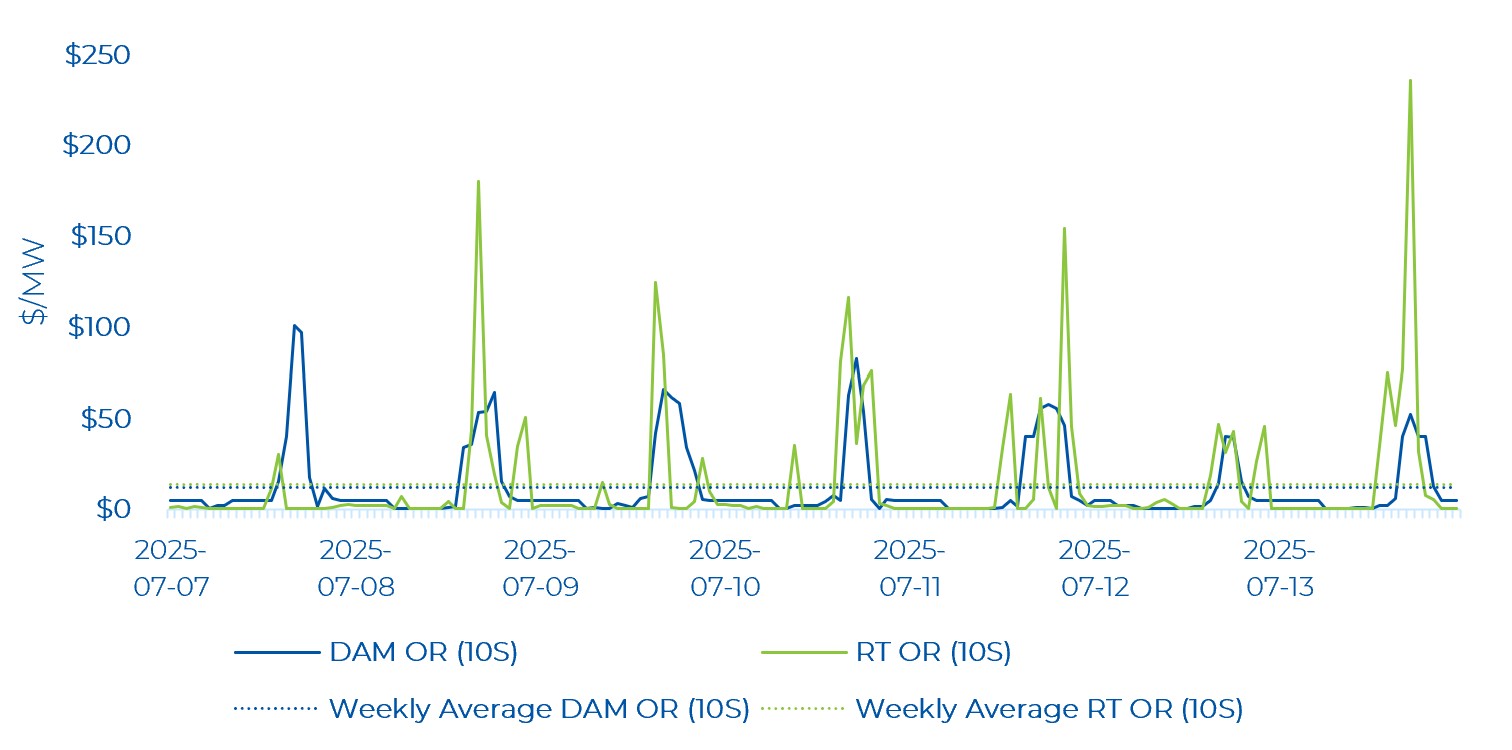
The average hourly OR price was below the average hourly energy price in the day-ahead market for all hours of the week – in line with historical patterns. Day-ahead OR prices generally closely tracked energy prices.
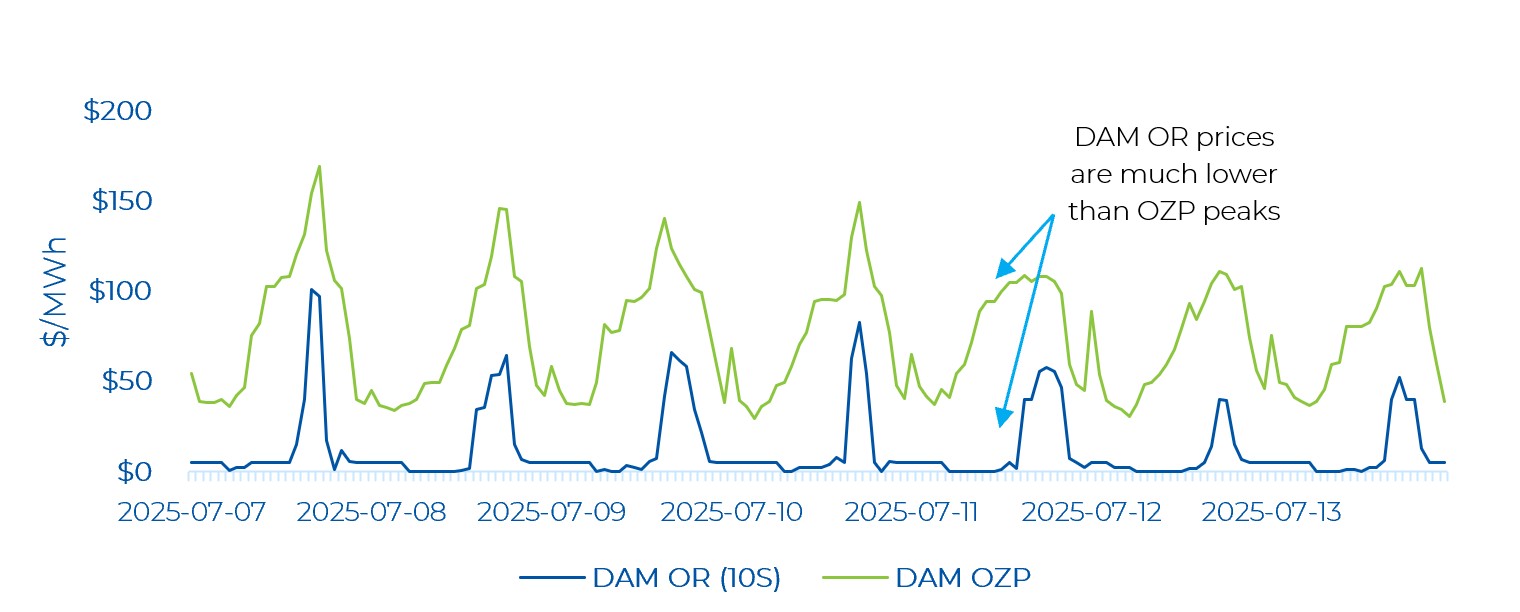
Real-time OR prices were low for several hours of the week with OR prices exhibiting less volatility compared to energy prices. Real-time OR prices are moving in tandem with real-time OZP. Note that real-time prices have much less convergence compared to the previous week’s review.
